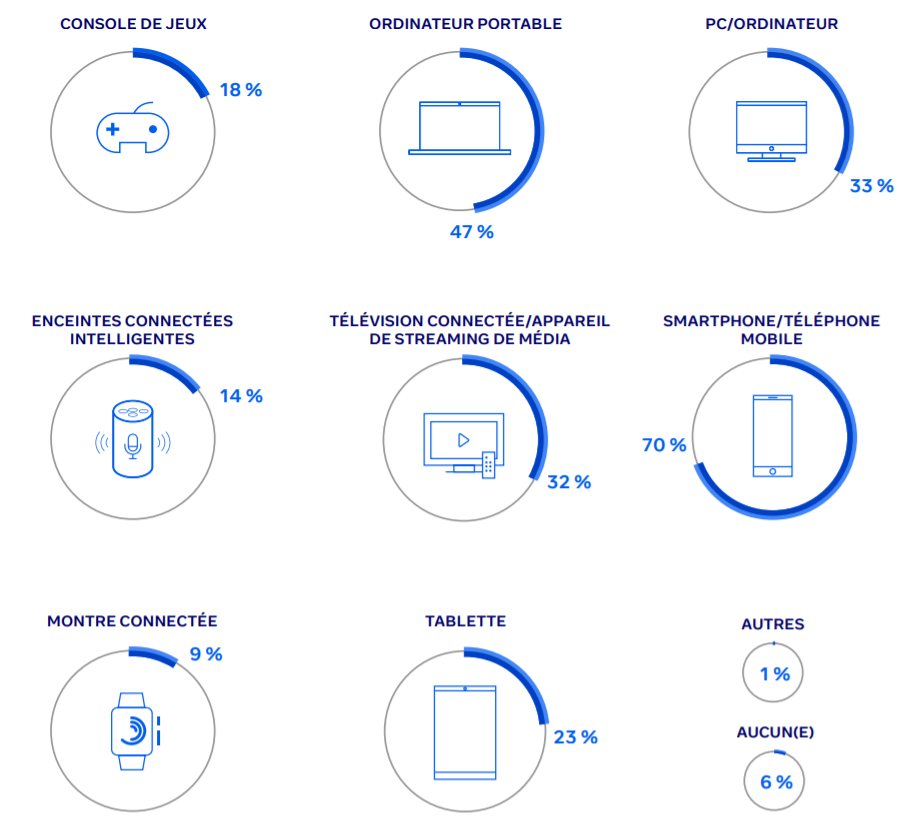

Evolution Of Purchasing Behavior Among Gamers
As a result, gaming companies are constantly innovating, such as offering on-demand video games, supporting cross-platform video games, or offering a product or license, normally on console, mobile or PC.
Facebook Gaming has studied the changes in consumer behavior in 2020 and the impact of physical distance and in-store safeguards on online commerce.
An increase in online purchases
When looking at video game sales, it is clear that online sales have increased over the past few years. However, the security measures put in place in stores have accentuated the fact that consumers can and will buy online. Despite these security measures, 89% of consumers across all countries (not just gamers) say they are at least somewhat worried about going to a store to shop because of the pandemic. These consumer concerns have, of course, increased online purchases, with 37% again, across all countries, saying they have ordered products online that they would normally buy in-store.
While consumers continue to buy in-store, the trend of online purchases (and not just for video games) will continue to grow. With such changes, console marketing teams will now have to go directly to the gamers... namely online. In fact, 49% of users say they will buy much more online after the pandemic.
Users are spending more time on their mobile devices
Not only have online shopping behaviors changed, but 70% of users reported spending more time on their mobile devices since the start of the COVID-19 pandemic. Consumers are spending more time researching and discovering products on their mobile devices. As a result, the risks associated with browsing online for purchases remain very high as consumers face new risk factors in-store and online, making an ongoing presence on mobile essential for discovery.
By the numbers, the devices' users have spent the most time on since the pandemic began:

And finally, some important points to remember:
1. Meet the new online gamers; they won't budge
Mobile game marketing teams can learn from the console industry when it comes to storytelling. It's about taking into consideration that users want to see gameplay in ads. By telling unique stories through immersive experiences and new formats, you can create affinity, which will drive the discovery of your products. Integrate creative elements into your ads with other advertising content avenues to engage gamers, such as streaming partnerships that can influence prospective gamers.
2. Adapting to new behaviors with a mixed strategic model
More and more users are participating in video game events, but also in related activities, especially the new gamer groups. These are real opportunities to adopt a constant rhythm in your marketing strategies. Join the conversations in video game communities to continue to engage your audiences in video games, but also in related activities.
3. Build affinity through awareness, recognition, and distinction
The number of users playing mobile games has broken all records compared to the pre-pandemic period. However, fewer and fewer gamers are spending money on video games. Since gamers are more open to ads in mobile games, but also to making in-app purchases, consider adopting a blended monetization model to take advantage of this growing craze.
4. Think about related video game activities
Marketing teams need to think about how their business and marketing strategies can evolve to reach these new audiences, such as expanding campaign targeting and developing ad content that will capture and engage with a broader audience.
Don't miss any news, subscribe now!
Related articles
Publications recommandées





